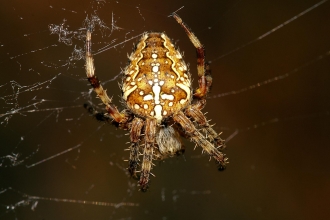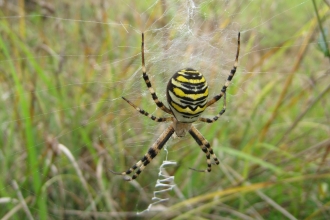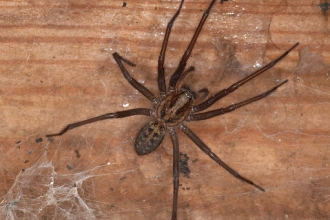When you begin to take a good look at spiders they are amazing and many are quite beautiful.
If you have been encouraged (as I was) to fear them, then studying them is a good way to take the fear away and replace that with respect and fascination.
We have about 670 species in the UK, most of these are very small and some are very rare. At least we think they are rare, not being as popular as butterflies and bees we don’t have nearly as much information on spider distribution as we would like, so there are lots of interesting discoveries to be made,
I had a county first record for one species…in my shed! No idea how it got there.
Spiders are incredibly diverse. Some live in webs, some stalk their prey and have no web, though all spin silk. Some live in trees, some underground and one lives under water.
Despite what you have heard, most females don’t routinely eat their mates, some cohabit happily for months and many are really good parents looking after their spiderlings until they can fend for themselves.
So some spider facts;
- Trilobites, scorpions and harvestmen all share the same ancestry with spiders.
- All spiders hunt live prey, but they have no chewing jaws so they feed by drinking the partially digested remains of their invertebrate prey.
- Being voracious hunters, they control many 'pest' species including flies and small bugs.
- Most spiders will inject their prey with venom from special fangs within their jaws (chelicerae) which paralyses the prey, but these fangs are small and in the UK only one or two species have fangs that can penetrate human skin and they will only bite if handled roughly, so in the UK spiders are not dangerous.
- You may have heard about the Noble False Widow, the clue is in the name, false. It’s a look alike and although it can bite it’s not dangerous, unlike its Australian cousin.
- You may have seen Shelob on Lord of the Rings trying to sting Frodo, but spiders don’t have a sting, the projections from the rear of their abdomen are spinnerets just for spinning silk, an amazing substance weight for weight stronger than steel.
- Spiders can fly! The young of many species and some adults of small species disperse by climbing to the top of vegetation or fence posts, raising their abdomen and releasing silk which catches the breeze and carries them away to pastures new.
- Spiders may have six or eight eyes depending on species. With hunting spiders the forward facing eyes are huge in relation to the animal and you can see them looking at you working out if you are a threat.
- Unlike insects (which breathe through tubes connected to small holes in their abdomen) spiders have lungs called book lungs which are more like gills These are located on the underside of their abdomen, sometimes visible as two pale patches.
Here are five spiders to look out for in your garden just a few of many species you might find.




